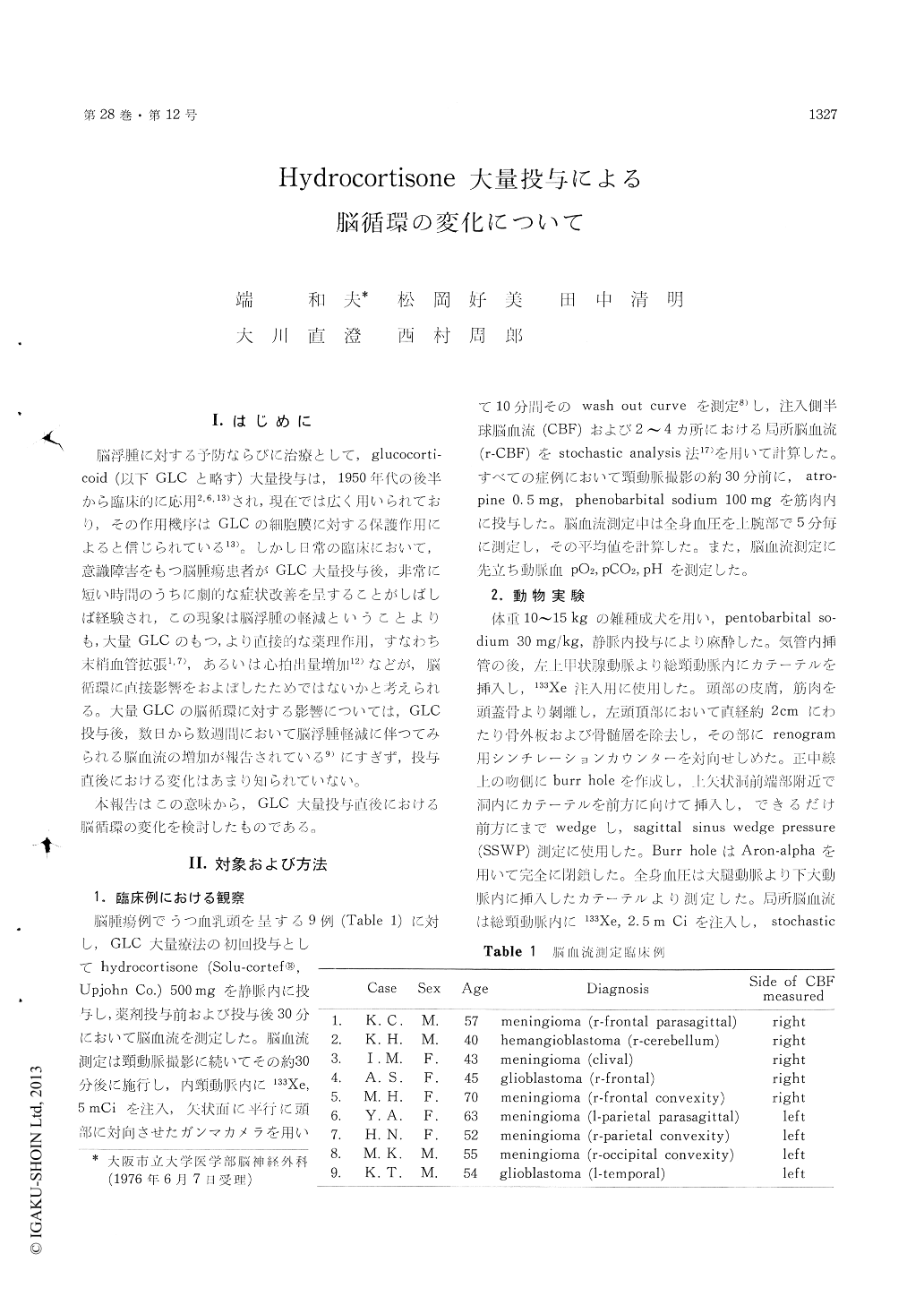Japanese
English
- 有料閲覧
- Abstract 文献概要
- 1ページ目 Look Inside
I.はじめに
脳浮腫に対する予防ならびに治療として,glucocorti—coid (以下GLCと略す)大量投与は,1950年代の後半から臨床的に応用2,6,13)され,現在では広く用いられており,その作用機序はGLCの細胞膜に対する保護作用によると信じられている13)。しかし日常の臨床において,意識障害をもつ脳腫瘍患者がGLC大量投与後,非常に短い時間のうちに劇的な症状改善を呈することがしばしば経験され,この現象は脳浮腫の軽減ということよりも,大量GLCのもつ,より直接的な薬理作用,すなわち末梢血管拡張1,7),あるいは心拍出量増加12)などが,脳循環に直接影響をおよぼしたためではないかと考えられる。大量GLCの脳循環に対する影響については,GLC投与後,数日から数週間において脳浮腫軽減に伴ってみられる脳血流の増加が報告されている9)にすぎず,投与直後における変化はあまり知られていない。
本報告はこの意味から,GLC大量投与直後における脳循環の変化を検討したものである。
The beneficial effect of large dose of gluco-corticoids in the treatment of cerebral edema has been well established and considered to be due to its protecting action for the lysosomal membrane from degeneration. Clinically however, it is not infrequently observed that a single injection of large dose of glucocorticoids could dramatically improve the patient previously unconscious due to cerebral edema within a period of 30 to 60 minutes after the injection. This may indicate that an immediate change in cerebral hemodynamics or in metabolism might occur by the mechanism other than relief of brain edema. The assumption that a large dose of glucocorticoids may directly infuence upon CBF is also suggested by its effectiveness as a potent peripheral vasodilator in the treatment of shock.
In the clinical study, CBF was measured in 9 patient with increased intracranial pressure using 133Xe intracarotid injection technique, before andafter intravenous injection of 500 mg of hydro-cortisone (Solu-cortef®). CBF measured over the cerebral hemisphere was increased significantly from 36.9±4.3 to 39.4±5.5ml/100g/min at the period of 30 minutes after the injection. Systemic blood pressure tended to fall but did not reach the level of statistical significance while cerebral vascular resistance was markedly reduced. Arterial pO2 increased and pCO2 tended to fall.
In the animal experiment performed using healthy mongrel dogs, an intravenous injection of 100mg/kg of hydrocortisone resulted in the same small but significant increase in CBF measured over the parietal region with 133Xe intracarotid injection technique. Systemic blood pressure fall to the level of 50% of the original value accompanied with bradycardia immediately after the injection. It was followed by a gradual recovery begun within 2-3 minutes. Intracranial pressure was first increased then decreased for a short period of time and there-after gradually increased along with the recovery of systemic blood pressure eventually reaching a level higher than the steady state value. Cerebral vascular resistance was reduced. Arterial pO2 in-creased and pCO2 tended to decrease.
These changes were best explained by suppressive effect of large dose of hydrocortisone on the sym-pathetic vasoconstrictor nerve activity.

Copyright © 1976, Igaku-Shoin Ltd. All rights reserved.


